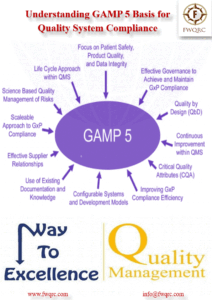Visible particulates in injectable products can jeopardize patient safety.
This guidance addresses the development and implementation of a holistic, risk-based approach to visible particulate control that incorporates product development, manufacturing controls, visual inspection techniques, particulate identification, investigation, and corrective actions designed to assess, correct, and prevent the risk of visible particulate contamination.
The guidance also clarifies that meeting an applicable United States Pharmacopeia (USP) compendial standard alone is not generally sufficient for meeting the current good manufacturing practice (CGMP) requirements for the manufacture of injectable products.
STATUTORY AND REGULATORY FRAMEWORK:
Under section 501 of the FD&C Act, a drug product, including an injectable product, is deemed adulterated if:
- “It has been prepared, packed, or held under insanitary conditions whereby it may have been contaminated with filth, or whereby it may have been rendered injurious to health”(section 501(a)(2)(A)
- “It is a drug and the methods used in, or the facilities or controls used for, its manufacture, processing, packing, or holding do not conform to or are not operated or administered in conformity with current good manufacturing practice to assure that such drug meets the requirements of this Act as to safety and has the identity and strength, and meets the quality and purity characteristics, which it purports or is represented to possess” (section 501(a)(2)(B)
- “It purports to be or is represented as a drug the name of which is recognized in an official compendium, and its strength differs from, or its quality or purity falls below, the standards set forth in such compendium” (section 501(b)
- It is a new animal drug that is unsafe within the meaning of section 512 (section 501(a)(5)
Adherence to FDA’s CGMP requirements as set forth in section 501 of the FD&C Act and 21 CFR parts 210 and 211 for drug, animal drug, and biological products; §§ 600.10 through 600.15 for biological products; and part 4 for combination products is essential for the control of visible particulates in injectable products.
Adherence to compendial standards can also assist manufacturers in complying with CGMP requirements (see, e.g., §§ 211.194(a)(2) and 211.165(e)
USP General Chapter <1> Injections and Implanted Drug Products (Parenterals)—Product Quality Tests states that “[t]he inspection process should be designed and qualified to ensure that every lot of all parenteral preparations is essentially free from visible particulates” as defined in USP General Chapter <790> Visible Particulates in Injections. Injectable products with a USP monograph are required to meet the applicable criteria from these USP General Chapters (see 94 section 501(b) of the FD&C Act). Non compendial products should also be “essentially free from visible particulates” as defined in USP General Chapter <790>
In accordance with USP General Chapter <1>, injectable products should be prepared in a manner designed to exclude visible particulates, and the inspection process should be designed and qualified to ensure that the products are essentially free of visible particulates. Each final container must be inspected (100% inspection) using a qualified method to detect particles within the visible size range, and all units that are found to contain visible particulates must be rejected (§§ 211.160(b) and 211.110(c) and (d); see also USP General Chapter <1>
Applying acceptance criteria, such as the criterion outlined in USP General Chapter <790>, is an important component of the overall visible particulate control program but meeting these acceptance criteria is not alone sufficient to ensure compliance with the applicable CGMP requirements identified above, which cover a broader array of manufacturing practices than product inspection. Full compliance with CGMP requirements is needed to ensure the continued supply of pure, safe, and effective injectable products.
CLINICAL RISK OF VISIBLE PARTICULATES:
The clinical manifestations of adverse events caused by particulate contamination vary and may depend on the route of administration (e.g., intravascular, intravisceral, intramuscular), patient population, and nature or class of the particulates themselves (e.g., physical size or shape, quantity, chemical reactivity to certain cells or tissues, immunogenicity, infectivity, carcinogenicity).
Applicants should consider these clinical risk factors when developing their quality target product profile and in establishing an appropriate control strategy and acceptance criteria for visible particulates.
QUALITY RISK ASSESSMENT:
Visible particulates can have a negative effect on overall product quality. To ensure product quality and to limit clinical risk, manufacturers should conduct a risk assessment during product development.
During this risk assessment, manufacturers should identify the typical visible particulates that could contaminate the injectable product and characterize their size ranges, quantity, and composition; determine risks for each type; and provide a visual description (e.g., photographs or drawings of typical defects) to be used for training purposes.
Manufacturers should also consider the potential sources of particulates, appropriate analytical methods to monitor them, and mitigation strategies to prevent their presence in the final product.
VISUAL INSPECTION PROGRAM CONSIDERATIONS:
Visual inspection can be viewed as part of a larger program to ensure that injectable products are essentially free of visible particulates. During injectable product development, manufacturers should establish procedures for inspecting the product, statistical sampling plan(s), acceptance/rejection criteria, and procedures for evaluating inspection results. Inspection procedures carried over from another site or another product may not always be suitable for a new product.
In addition to inspection, a visible particulate control program should include the training and qualification of operators and investigation of discrepancies, including root cause analysis, corrective actions, and preventive actions.
Takeaway: Manufacturers should conduct 100% inspection during the stage at which there is the greatest likelihood that visible particulates will be detected in the final container (e.g., before labeling to maximize container clarity). Manufacturers should ensure that the equipment used and the physical environment where visual inspection will be performed are designed to minimize variability and maximize detectability in the inspection process.
Trained and qualified personnel, automated inspection technology, or a combination of both should be used to inspect each unit of injectable product for visible particulates.
If you would like to receive notifications on recent regulatory guidance, please write to info@fwqrc.com






Useful information shared for visual inspection of Injectable products .thank you FWQRC
Thank you for following our posts.